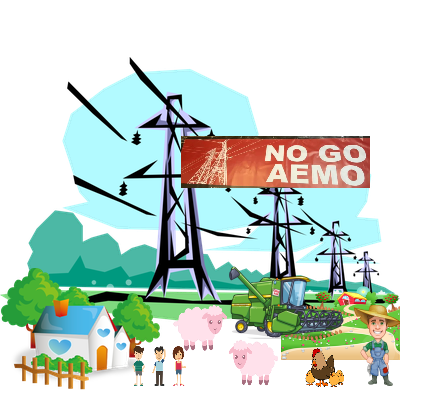
It’s hard to comment extensively on compensation. That’s because there is no uniform approach to compensation.
Every state has it’s own rules for transmission, but for generators, the rules are non-existent. Every wind and solar generator decides on what payments and arrangements will be offered.
All of the so-called compensation packages are really no more than a transaction. At best landholders or neighbours are getting fair value for what is being taken.
But this does not recognise the nature of the transaction - compulsory and forcible. Pain and suffering is real. Many of these landholders had visions of the future that are now changed irrevocably.
When a valuer reports that there are buyers for the property regardless of renewable energy infrastructure, those buyers are self-selecting, choosing to accept the impost. This is not the case for the incumbent.
There's no compensation in these packages.
Some overall observations can be made.
- There is no common framework for determining the amount of compensation. The main factor in the amount of any compensation seems to be who is offering the compensation. It should be the impost on the affected party that determines the value. Where is the research?
- There is no common framework for impost on agriculture. There is a real cumulative effect in reducing the productivity of farms. Something large and real could be lost here, little by little.
- Government payments are generally only offered as up-front. In relation to transmission lines, landholders are being asked to take on all future risk for an upfront payment. Landholders shouldn’t have to accept any consequential liabilities now or in the future.
- While landholders are in a really difficult situation and are clearly worst affected, neighbours to any of these renewable energy facilities are also big losers. Some of the generators are offering payments to neighbours within varying distances, some up to a couple of kilometres. Neighbours to transmission lines get nothing. There are draft proposals for payments, but if they ever become “law” these are likely to be so constrained as to be meaningless.
There’s no community in these compensation arrangements.
Communities are being torn apart by renewable energy companies enticing individuals, not communities.
Payments to local governments as nominal community benefit are suspect - why are companies paying money without receiving any services? Transparency?
Much of the criticism here is about the lack of research and structure around impacts and compensation.
AEMO have a $700 million a year budget. If even a small portion of that was directed towards determining these factors maybe they wouldn’t be as contentious.
Looking at the many, many documents available on the AEMO website, it is apparent how much effort has gone into the technical implementation, but how little has been done to consider community impacts.
The work around all aspects of compensation should have been done long ago, but the next best time is now!